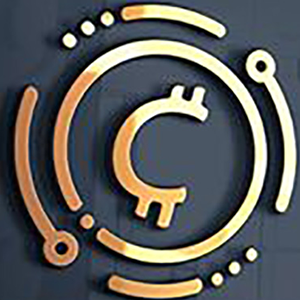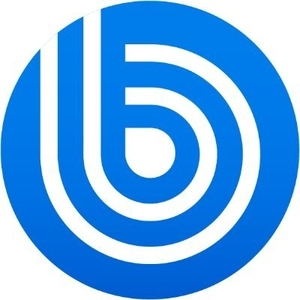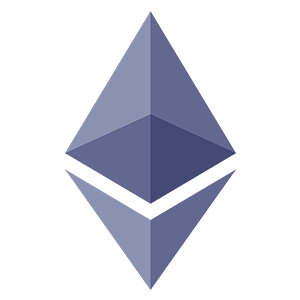$ 0.200 0.02%
Voxels (VOX) Rank 2668
Voxelus is a platform that allows anyone, anywhere to create, share and play virtual reality games and experiences without writing a single line of code. Voxelus includes a bundle of free assets that you can use to design with more content coming out every week.
The coin itself (Voxels) is a fork of Litecoin that is fully premined. Mining is possible but not recommended. We could not find their github repository.
The team behind Voxelus is quite impressive:
- Halsey Minor -Â [email protected] Founder of CNET , Salesforce, Google Voice, Chairman of Uphold(formaly Bitreserve), Chairman of Voxelus.
- Martin Repetto -Â [email protected] Â CEO and co-founder Voxelus
- Máximo Radice - [email protected] Voxelus Platform Developer
- Michael Terpin -Â [email protected]Â Voxelus & Voxel PR Team
- Jim Blasko -Â [email protected]Â Creator of Voxels
Voxelus also features a stand-alone player app that plays the content created with the desktop tool on your PC, with or without Oculus Rift and on the Samsung Gear VR. We have support for real time multiplayer.
You can check their latest trailer here: https://vimeo.com/157963300
The asset library can be expanded by purchasing content from designers all around the world in the Voxelus Marketplace, an online 3D asset store where users can upload 3D assets that are curated and compatible with the voxelus platform. To operate in the Marketplace users need Voxels, the official currency of VR and the only form of money used inside the Voxelus Platform.
You can contact the Voxelus team by email at:Â [email protected]
Features
The Voxelus Platform
Voxelus is a platform that allows anyone, anywhere to create, share and play virtual reality games and experiences without writing a single line of code. Voxelus also features a real time multiplayer app that plays the content created with the desktop tool, currently working on Oculus Rift and the Samsung Gear VR. Â
- The asset library can be expanded by purchasing content from the Voxelus Marketplace.
- To operate in the Marketplace users need Voxels.
The Voxelus Marketplace
The Voxelus Marketplace allows users to expand their content library by purchasing 3D assets from designers all around the world. The marketplace is an online curated 3D asset store compatible content with the voxelus platform.
They took the hassle out of 3D content, in the marketplace you just select what you want, you purchase the asset and then it becomes automatically available in The Voxelus Creator the next time you open it or hit refresh.Â
To operate in the Marketplace users need Voxels which is currently the only form of money used inside the Voxelus Platform.Â
Voxelus also announced their partnership with Flatpyramid.com , an online marketplace for discovering, buying and selling 3D content. With the partnership, Voxelus will integrate up to 7000 Flat Pyramid VR assets such as non-proprietary graphics, images and 3D models, including still and animated characters and environments into the Voxelus Marketplace, making them readily accessible for creating custom VR worlds immediately ready for multiplayer. Â
- New content uploaded every day! Â
- Anyone can sell assets and make money! Learn More! Â
Created to Encourage Broader Cryptocurrency Adoption
Voxelus Endows Voxel Foundation with 5 Million Voxels to Fund Hackathons, Conference, Global Outreach, New Blockchain Applications for Consumer Entertainment and Content.
Voxelus just announced that it will fund a Voxel Foundation with 5 million Voxels ($3.5 million) to expand the robust cryptocurrency to work with a variety of networks, games, VR platforms and entertainment content providers, as well as to seed its adoption in Latin America and Asia, where gaming is popular but millions of users have no access to the traditional financial system to purchase digital assets online.
- Foundation Will Grant $1 Million in First Year to Developers! Â
- Prizes of up to V$100,000 to encourage development of non-entertainment applications. Â
- Annual developer and content creator conference. Â
- Up to V$50,000 grants for blockchain social implementations and ideas. Â
The Voxel & Uphold
The Voxel is one of the virtual currencies supported by Uphold that is exchangeable on a major exchange for USD, EURO, GOLD, SILVER and over 30 more currencies. Creating an account at Uphold Is free! Â
- HOLD your VOX safely and securely in your Uphold Wallet for FREE. Â
- SEND your VOX to any member on Uphold, easily, instantly and for FREE. Â
- The Voxel can be managed very easily via Uphold, buying and selling with just a few clicks. Â
- Create an account and connect any bank accounts in the US, Europe and Asia. Â
Technology
Litecoin Core - Upgraded to the latest version with added extra security and two minutes verifications.
Pre Mined Currency 210Â - Million token are pre-mined, transactions utilize 0.1 voxel mining fee.
Multiplatform Wallets - The tokens and wallets are operational today. PC Windows, Mac and Linux are supported.
Verified By Experts - The Voxel passed industry experts verifications in terms of security and functionality before it was sent to the exchanges.
Supported By Major Exchanges - The Voxel is techonologycally approved by major exchanges that will start trading the coin in Q2 2016.
Free Online Wallet - Created and provided by Uphold. The Voxel online wallet is fully operational and it's the safest and easiest way to hold voxels.
| Mkt.Cap | $ 0.00000000 | Volume 24H | 0.00000000VOX |
| Market share | 0% | Total Supply | 210 MVOX |
| Proof type | PoW | Open | $ 0.20 |
| Low | $ 0.20 | High | $ 0.20 |
What is Functional Magnetic Resonance Imaging
Normally atomic nuclei are randomly oriented but under the influence of a magnetic field the nuclei become aligned with the direction of the field. When pointing in the same direction, the tiny magnetic signals from individual nuclei add up coherently resulting in a signal that is large enough to measure. In fMRI it is the magnetic signal from hydrogen nuclei in water (H2O) that is detected. It is common to combine fMRI signal acquisition with tracking of participants' responses and reaction times. One common approach to analysing fMRI data is to consider each voxel separately within the framework of the general linear model.
Fourth, smoothing renders the data more Gaussian distributed, improving the validity of the commonly used Gaussian random field (GRF) theory thresholding approach. Typically between 4 and 16 mm full-width half maximum (FWHM) smoothing (with a Gaussian linear filter) is applied.

Ogawa realized that he could use these contrasts in the blood oxygen response to map images of brain activity on a normal MRI scan. The fMRI technique can complement or supplement other techniques because of its unique strengths and gaps.
Thus, they are used extensively for visualization and analysis of scientific and medical data from devices like CT scanners and x-ray/ultrasound machines. Some game engines also use voxels and volumetric data to create terrain and vegetation. The concept behind MRI has been around since the beginning of the 20th century.
These changes in blood flow, which are captured on a computer, help doctors understand more about how the brain works. Then in the early 1990s, a physicist named Seiji Ogawa who was working at what was then Bell Laboratories in New Jersey, discovered something while conducting animal studies. He found that oxygen-poor hemoglobin (the molecule in blood that carries oxygen) was affected differently by a magnetic field than oxygen-rich hemoglobin.
Scalar indices (FA, MD, et al.) were then calculated from the aligned tensor images. After minimal smoothing, the images were fed into the statistical comparison tool.

What is a voxel in the brain?
A pixel is, by definition, a picture element: "is a physical point in a raster image". A voxel is truly 3D, which implies that a pixel exists only in a 2D plane (and not the number of dimensions of the data used to encode it).
5 Courses to Get You On Track to a Lucrative Data Science Career

It is a volume element that represents a specific grid value in 3D space. However, like pixels, voxels do not contain information about their position in 3D space. Rather, coordinates are inferred based on their designated positions relative to other surrounding voxels. One may compare volume pixels to bricks, which are stacked and used to build bigger structures. In this scenario, each brick is placed next to each other, but the bricks are not defined.
Third, diffusion tensor images were estimated using a weighted least square method. Skull stripping is performed automatically via a brain mask computed from baseline images with itkEMS. Masking out the non-brain tissues stabilizes the following registration step. A generalization of a voxel is the toxel, or temporal voxel[39]. This is used in the case of a 4D dataset, for example, an image sequence that represents 3D space together with another dimension such as time.
What is nominal resolution?
Background. CBCT is a recent technology. Imaging is accomplished by using a rotating gantry to which an x-ray source and detector are fixed. A divergent pyramidal- or cone-shaped source of ionizing radiation is directed through the middle of the area of interest onto an area x-ray detector on the opposite side.

This provides a means of discriminating between gray matter, white matter and cerebral spinal fluid in structural images of the brain. The cylindrical tube of an MRI scanner houses a very powerful electro-magnet. A typical research scanner has a field strength of 3 teslas (T), about 50,000 times greater than the Earth’s field. The magnetic field inside the scanner affects the magnetic nuclei of atoms.

Limitations of this method include manual intervention in specifying ROIs and fiber tract cleaning. Volume pixels are used like building blocks to form a larger 3D object. Like stacked bricks, voxels do not contain specific information about their axis coordinates.
Voxel-based morphometry shows a reduction in gray matter density in a patient with type 1 diabetes and retinopathy. Changes in gray matter density are shown on a mean normalized structural image in axial planes. The images show areas of significantly reduced gray matter density in right frontal gyrus (A), right occipital lobe (B), left cerebellum (C), and left middle frontal gyrus (D). Industrial CT scanning technology is very similar to CAT scanning technology. With volumetric displays, a scan’s resolution will depend on number of voxels used to capture the image.
- It is important to note that the larger the voxel size, the less resolution the image will have and less capability to differentiate between small structures (Figure 8).
- In fMRI, pinpointing these differences enables scientists to determine which parts of the brain are most active.
- This creates a clever disguise of looking like pixel art, but behind the scenes they have all the 3D information with which to create completely correct dynamic lighting.
- A direct consequence of this difference is that polygons can efficiently represent simple 3D structures with lots of empty or homogeneously filled space, while voxels excel at representing regularly sampled spaces that are non-homogeneously filled.
- Industrial CT scanning technology is very similar to CAT scanning technology.
- In general, fMRI studies acquire both many functional images with fMRI and a structural image with MRI.
10.3 Voxel-Based Morphometry—Overview and Application to Diffusion Data
In the fiber tract based method, a study specific unbiased tensor image atlas is first computed via a fluid-based nonlinear registration method [6]. Fiber tracking is done in the atlas tensor image and then, the diffusion properties are parameterized along the fiber tracts from all the aligned subjects’ tensor images. Finally, group comparison is conducted on the on-tract diffusion properties. Diffusion Tensor Magnetic Resonance Imaging (DT-MRI, DTI) [1] is a relatively new but rather fast developing MR imaging modality, aiming to measure the diffusivity of water in tissue. DTIs have been widely used to investigate white matter microstructure and its changes in brain, in vivo including normal brain development, aging and pathological damages.
What are the pixels of an fMRI image called?
Just like your digital camera, a brain scan can be defined by units of spatial resolution. However, because the image is 3D, we call these volumetric pixels, or voxels for short.
4.1.1 Voxel-Based Morphometry

By the early 2000s, fMRI studies began to discover novel correlations. Still their technical disadvantages have spurred researchers to try more advanced ways to increase the power of both clinical and research studies.
Voxel-Based Morphometry

Rather, they have some information about their relative location in relation to nearby voxels and are considered single points in 3D space. They are good for representing regular sample shapes that are not homogeneously filled, in contrast to polygons and points, which are explicitly presented by the coordinates of their points (vertices). Polygons more efficiently represent simple 3D shapes by creating the surfaces and using a great deal of homogeneously filled space. A volumetric pixel (volume pixel or voxel) is the three-dimensional (3D) equivalent of a pixel and the tiniest distinguishable element of a 3D object.

Voxels are the scanner’s units of measurement for capturing image data. The image shown is the result of the simplest kind of fMRI experiment. While lying in the MRI scanner the subject watched a screen which alternated between showing a visual stimulus and being dark every 30 second. Meanwhile the MRI scanner tracked the signal throughout the brain.

What is Cbct and how does it work?
The 3-dimensionsal image it provides is built up in units called voxels. Each one represents a tidy cube of brain tissue—a 3-D image building block analogous to the 2-D pixel of computers screens, televisions or digital cameras. Each voxel can represent a million or so brain cells.
Pathway, Robotality, 2016 (work in progress)Graphics look completely like they’re using pixel art sprites, but the information behind them is actually volumetric. Unlike the voxel engines from the 90s that tried to look as modern and realistic as possible, developers at Robotality don’t have to go further than matching voxels to the size of display pixels. This creates a clever disguise of looking like pixel art, but behind the scenes they have all the 3D information with which to create completely correct dynamic lighting. Although Minecraft blocks are voxels by definition (they are the smallest discrete volume units in the game), they come in a wide variety of types represented by low-poly models with pixel art textures.
The technique can localize activity to within millimeters but, using standard techniques, no better than within a window of a few seconds.[6] Other methods of obtaining contrast are arterial spin labeling[7] and diffusion MRI. The latter procedure is similar to BOLD fMRI but provides contrast based on the magnitude of diffusion of water molecules in the brain.

Temporal filtering amounts to removing the periodic waves not of interest to us from the power spectrum, and then summing the waves back again, using the inverse Fourier transform to create a new timecourse for the voxel. A high-pass filter removes the lower frequencies, and the lowest frequency that can be identified with this technique is the reciprocal of twice the TR. A low-pass filter removes the higher frequencies, while a band-pass filter removes all frequencies except the particular range of interest. To integrate the results across subjects, one possibility is to use a common brain atlas, and adjust all the brains to align to the atlas, and then analyze them as a single group. The atlases commonly used are the Talairach one, a single brain of an elderly woman created by Jean Talairach, and the Montreal Neurological Institute (MNI) one.
Industrial CT Scanning Terms – What Are ‘Voxels’ And Why Do They Matter?
MRI, in general, has better spatial resolution than EEG and MEG, but not as good a resolution as invasive procedures such as single-unit electrodes. While typical resolutions are in the millimeter range, ultra-high-resolution MRI or MR spectroscopy works at a resolution of tens of micrometers. It uses 7 T fields, small-bore scanners that can fit small animals such as rats, and external contrast agents such as fine iron oxide. The first fMRI studies validated the technique against brain activity known, from other techniques, to be correlated to tasks.

Baseline versus activity conditions
Once voxels are taken into consideration and the effects are understood, ensuring the highest resolution for a CT scan becomes simple and efficient. Radiology (5 )Ultrasound (2 )Partial Volume EffectThe partial volume effect is the loss of contrast between two adjacent tissues in an image caused by insufficient resolution so that more than one tissue type occupies the same voxel (or pixel).







